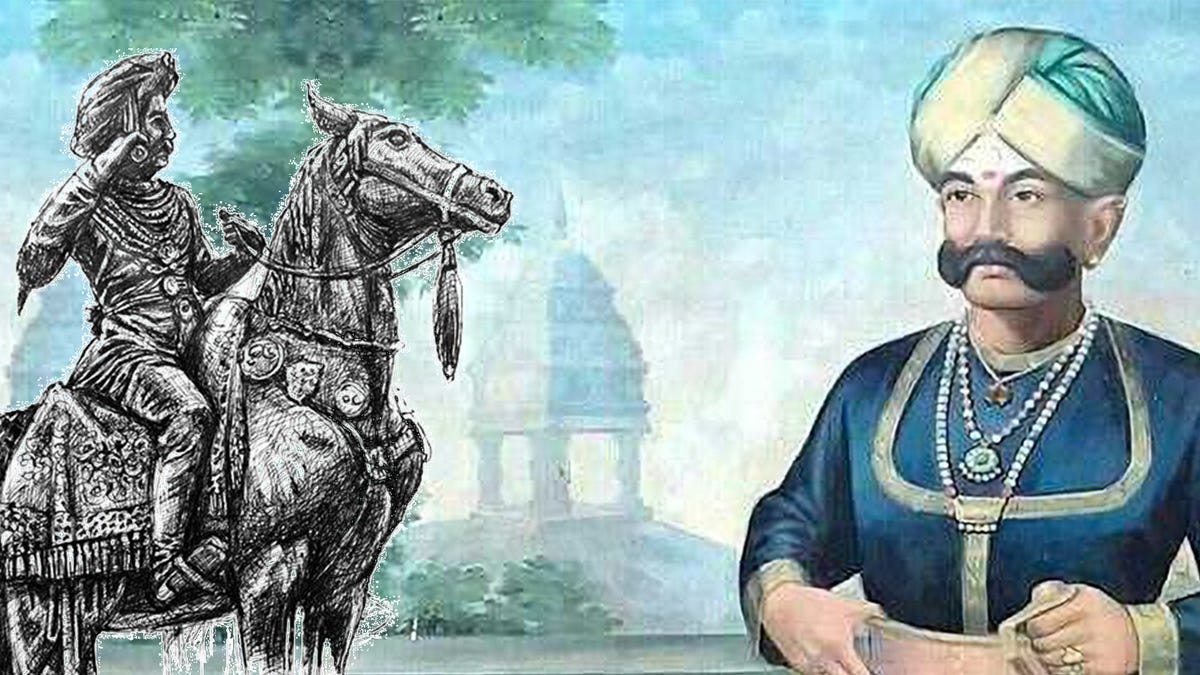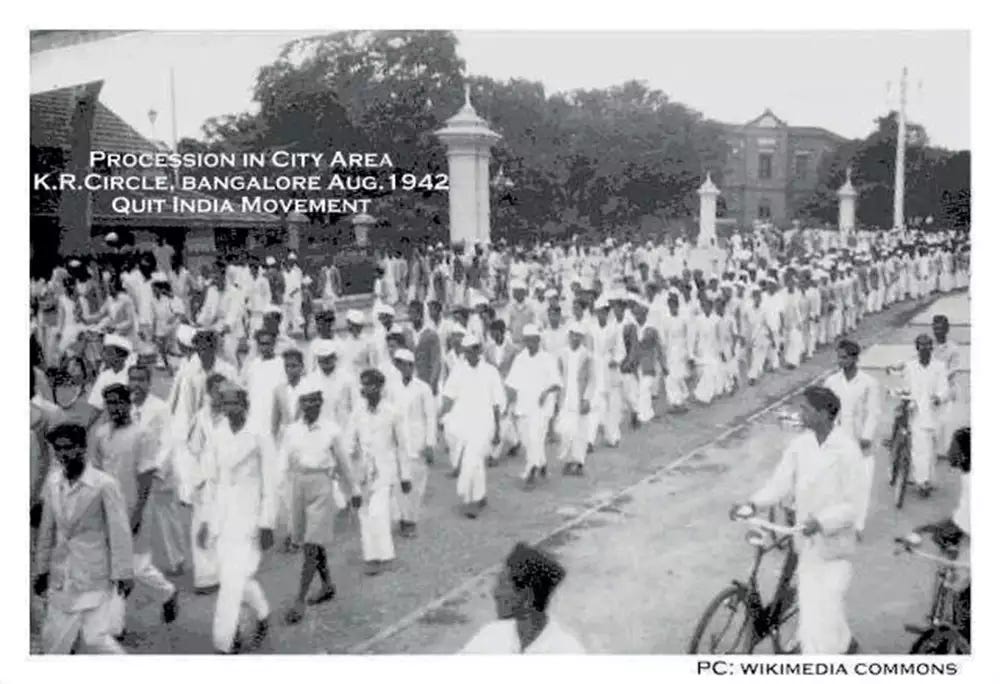Welcome to the ‘Lighter Side’. Every week, I take one fascinating story about the real world around us, research and find more stories about it and share it with my curious readers. What follows in today’s story is the answer to the question ‘What happened in Bengaluru more than 100 years ago, because of which the people there have hardly any drinking water today?’ I have narrated this story as a podcast as well. If listening to stories is your thing, click on the link below.
Also, a quick reminder - Our podcasting summer camp for kids aged 7-16 is almost here. It starts on 29-Apr. It’s for 5 days from 11am - 12 noon (Apr 29 to May 3). Lots and lots of fun to be had, with games and stories. There’s also the workshop part where we guide each child to pick a topic, research it and then narrate it as a podcast. Our last cohort of summer-camp podcasters did a fantabulous job of putting together their own podcasts on Spotify and Apple Podcasts.

Once upon a time….
…more than a thousand years ago, a few groups of local tribes arrived on a hillock. This hillock was part of a plateau in Southern India. When the first set of people arrived on this hillock, they were greeted by arid and dry land. A few thorny bushes also joined in welcoming them. One of the athletic young kids in the tribe ran around telling everyone that this was a fabulous place to live in. After all, there was plenty of place to run and play tag with friends. Some of the older people in the tribe thought the weather was delightful. A gentle breeze and some rain could be had throughout the year. A wise old person in the tribe stood up and asked ‘Pray tell me! Whatever will we do for food if we lived here? How will we grow any crops when there’s not a drop of water to be had from anywhere’.
The hillock had a real problem. The nearest river flowed a good 100kms away. Even though it rained regularly, all the rainwater simply flowed down the hill and left nothing on the plateau.

The tribes hit on a brilliant plan - which was to build a series of lakes on this plateau. They simply used their hands and created embankments (or mud walls) around a small area. These would hold water when it rained and prevented the water from flowing down hill. They built a series of lakes one below another along the side of the hill. They also connected these lakes to each other through canals.
Why connect lakes?
Connecting the lakes was a masterstroke. Whenever it rained heavily, there was always a risk of a lake overflowing. But by connecting the lakes by canals, they let the excess water flow onto the next lake. The last lake below would simply let water flow down to the valley if ALL lakes got full. The valley would carry the rainwater away into river tributaries. All this was done more than a thousand years ago, when machines were yet to be invented.
This is the region we call today as Bengaluru.
About 500 years ago…
The Vijayanagara Empire kings ruled a large part of Southern India. This region that we today call Bengaluru, was also ruled by the kings of Vijayanagara dynasty. King Krishna Deva Raya had died recently. His brother Achyuta Deva Raya ascended the throne. A young man called Kempe Gowda had joined his army and had served him very well in a few battles. The king was pleased with Kempe Gowda and gifted him lands and riches. Kempe Gowda had a dream of building a beautiful city where traders from all over the world would come and live there. People from different religions and cultures would co-exist happily in this city. Now that he had some money, he set out to find a place where he could build this city. His horse stopped near a beautiful lake where a gentle breeze swept his face. Kempe Gowda decided that he would build his city here. He is the ‘founder of modern-day Bengaluru’. This was a Bengaluru that was already dotted with lakes and canals.
His mother realised that if her son’s wishes of thousands of traders living in this city were to come true, they would need to grow more food and water. She called Kempe Gowda to her bedside and told him in Kannada ‘keregalum kattu marangalum nedu’ - which loosely translated in English means ‘build lots of lakes and plant many trees’. Kempe Gowda found much wisdom in her words. He began the process of building many hundreds of lakes, and connected them to each other. The plentiful water stored in the lakes also allowed it to seep underground. This helped farmers find enough groundwater to grow their crops.

Bengaluru flourished. Many rulers came and went. There were times when the city was ruled by the Bijapur Sultan and then the Maratha kings. For a while the Mysore Maharajahs also ruled the city. Throughout these changes, the lakes and canals remained untouched and continued to support life in the city.
Enter the British in the 1800s
Bengaluru’s lovely weather attracted a great many Brits. The rest of Southern India was a sweltering hot pot and this hillock provided them some glorious respite. The gentle breeze, the lakes and gardens reminded them of their home ‘England’. This was also a time when machines, motors and engines had been invented. When the British came to live in Bengaluru, they thought of putting their motors to good use, and how!
They decided to get water from the river Kaveri that ran a good 125km away from Bengaluru. They would use pipes and motors to pump water all the way upto the city. In the process, they ignored the lakes and canals that had been built on the hillock over several centuries.
The British left and India continued to ignore her lakes
After India became independent, the country followed the (foolish) practice of the British. They ignored the lakes, destroyed some of them and used the land to build houses, skyscrapers and more. From over 1400 lakes in the 1800s, Bengaluru today has just 33 living lakes. More than a hundred years ago, there used to be a huge lake called the Dharmabuddhi lake, in the middle of the city. The Indian government in its great wisdom cemented the lake and built a large bus stand on top of it. Ironically it is called the Kempe Gowda bus-stand (we are not sure if Kempe Gowda would be pleased to know that his grand lake had made way to this piece of modern urban plan).
Earlier when it rained, the water that was collected in the lakes would seep into the ground. This meant that during the years when rains failed, the water stored in the lakes and the ground water beneath would support the people. But with the lakes gone, that support system no longer exists.
Last year - rains in South India failed. River Kaveri had little water. The city of Bengaluru that depended on the glorious pipes built by the British could only hear the hissing sounds of air come out of the pipe. Very little water came out of them. Where there used to be lakes, there are tall buildings today. Where there used to be space for ground water to percolate and collect beneath the soil, there are malls and cemented roads. Is it any surprise that the people of Bengaluru do not have enough water to drink this summer?
Book recommendations from a 10-yr old
If you are looking for interesting books to browse through this summer, Kiaansh from Mumbai recommends this for kids aged above 9.
A boy called Bob meets a blobfish fish called Blob! A friendship is formed! This is a funny and happy story that also includes some very strange animals.
His recommendations include Roald Dalh’s tales - The enormous crocodile, the magic finger and the twits. Kiaansh has also written a piece himself (tada!). It’s called ‘Interstellar Space Adventure’. Want to read a story written by one of your peers? Click here to check it out.





